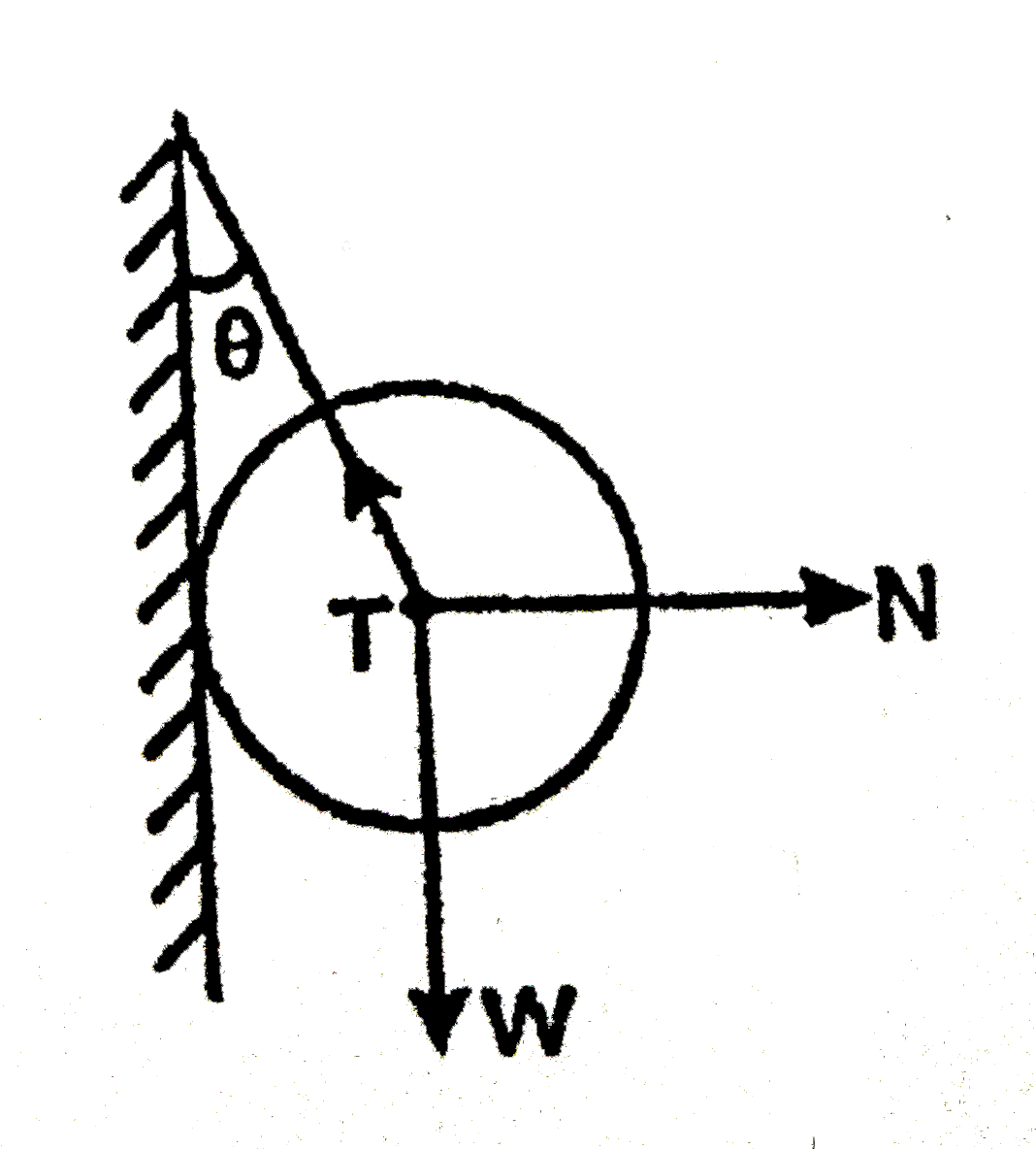A string is fixed at both end transverse oscillations with amplitude a0 are excited. Which of the following statements are correct ?
(a) Energy of oscillations in the string is directly proportional to tension in the string
(b) Energy of oscillations in nth overtone will be equal to n2 times of that in first overtone
( c) Average kinetic energy of string (over an oscillation period) is half of the oscillation energy
(d) None of the above
The correct Answer is:A, C
If a string of length l has cross - sectional area A, density of its material ρ then its oscillation energy is given by
E=π2Aρa20lf2
where f is frequency of transverse stationary wave formed in the string .
But f=vλ=1λ√Tm
where λ is wavelength , T is tension in the string and m=Aρ.
Since , string has a fixed length , therefore , wavelength of a tone excited in the string is constant . Hence , energy E∝T. Therefore , option (a) is correct .
If the frequency of fundamental tone is f0, then the frequency on nth overtone will be equal to (n+1)f0.
Hence , oscillation energy of the string will be equal to :
En=π2Aρa20lf20(n+1)2
Since En is not directly proportional to n2 , therefore , option (b) is wrong .
Since , every particle of the string performs SHM, therefore , r.m.s. speed of a particle
=1/√2× its maximum speed
Hence , average KE is half of maximum KE. But maximum KE is equal to oscillation energy of the string . therefore , option (c) is correct.
Topper's Solved these Questions
- SUPERPOSITION AND STANDING WAVESBook:CENGAGE PHYSICSChapter:SUPERPOSITION AND STANDING WAVESExercise:Assertion - Reasoning
Explore 6 Videos
- SUPERPOSITION AND STANDING WAVESBook:CENGAGE PHYSICSChapter:SUPERPOSITION AND STANDING WAVESExercise:Comprehension
Explore 55 Videos
- SUPERPOSITION AND STANDING WAVESBook:CENGAGE PHYSICSChapter:SUPERPOSITION AND STANDING WAVESExercise:Single Correct
Explore 144 Videos
- SOUND WAVES AND DOPPLER EFFECTBook:CENGAGE PHYSICSChapter:SOUND WAVES AND DOPPLER EFFECTExercise:Integer
Explore 16 Videos
- THERMODYNAMICSBook:CENGAGE PHYSICSChapter:THERMODYNAMICSExercise:24
Explore 1 Video
Similar Questions
Knowledge Check
A metal sphere is hung by a string fixed to a wall. The forces acting on the sphere are shown in fig Which of the following statements are correct?
 A→R+→T+→W=0BT2=R2+W2CT=R+WDR=Wtanθ
A→R+→T+→W=0BT2=R2+W2CT=R+WDR=WtanθA metal sphere is a string fixed to a wall. The forces acting on the sphere are shown in figure. Which of following statements are correct.
 A→N+→T+→W=0BT2+N2+W2=0CT=N+WDN=Wsinθ
A→N+→T+→W=0BT2+N2+W2=0CT=N+WDN=WsinθA string fixed at its both ends vibrates in 5 loops as shown in the figure. The number of nodes and antinodes respectively
 A5,6B6,5C7,4D4,7
A5,6B6,5C7,4D4,7
A transverse harmonic wave is propagating along a taut string. Tension in the string is 50 N and its linear mass density is 0.02kgm–1 The string is driven by a 80Hz oscillator tied to one end oscillating with an amplitude of 1mm. The other end of the string is terminated so that all the wave energy is absorbed and there is no reflection
(a) Calculate the power of the oscillator.
(b) The tension in the string is quadrupled. What is new amplitude of the wave if the power of the oscillator remains same?
(c) Calculate the average energy of the wave on a 1.0m long segment of the string.
View SolutionA string of mass m is fixed at both ends. The fundamental tone oscillations are excited with circular frequency ω and maximum displacement amplitude amax . Find :
(a) the maximum kinetic energy of the string,
(b) the mean kinetic energy of the string averaged over one oscillation period.
View SolutionA stretched string of length L , fixed at both ends can sustain stationary waves of wavelength λ Which of the following value of wavelength is not possible ?
View SolutionA ball of mass m is attached to a string whose other end is fixed. The system is free to rotate in vertical plane. When the ball swings, no work is done on the ball by the tension in the string. Which of the following statement is the correct explanation?
View SolutionThe transverse displacement of a string clamped at its both ends is given by
y(x,t)=2sin(2π3x)cos(100πt)
where x and y are in cm and t is in s.
Which of the following statements is correct?
View Solution


